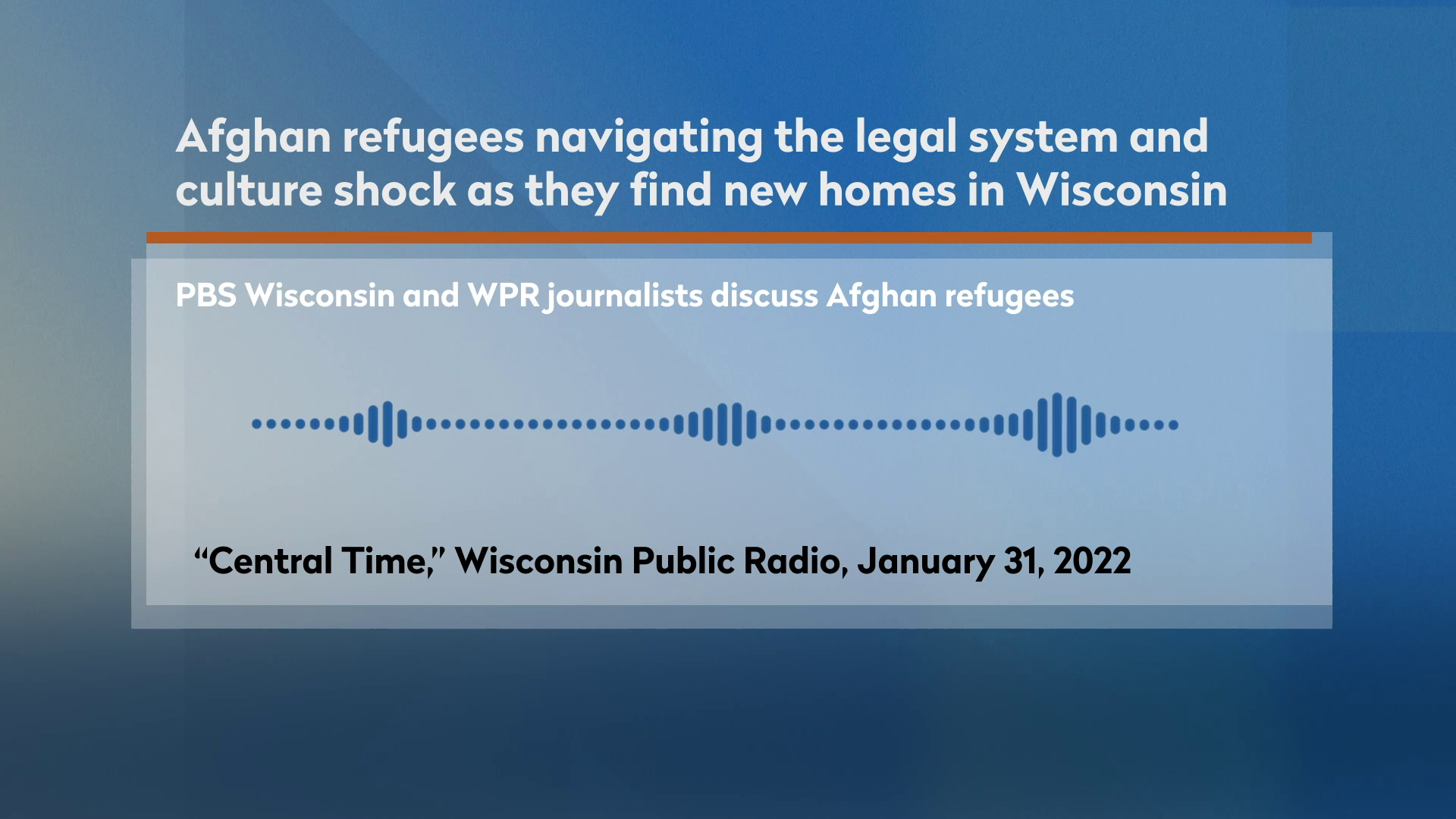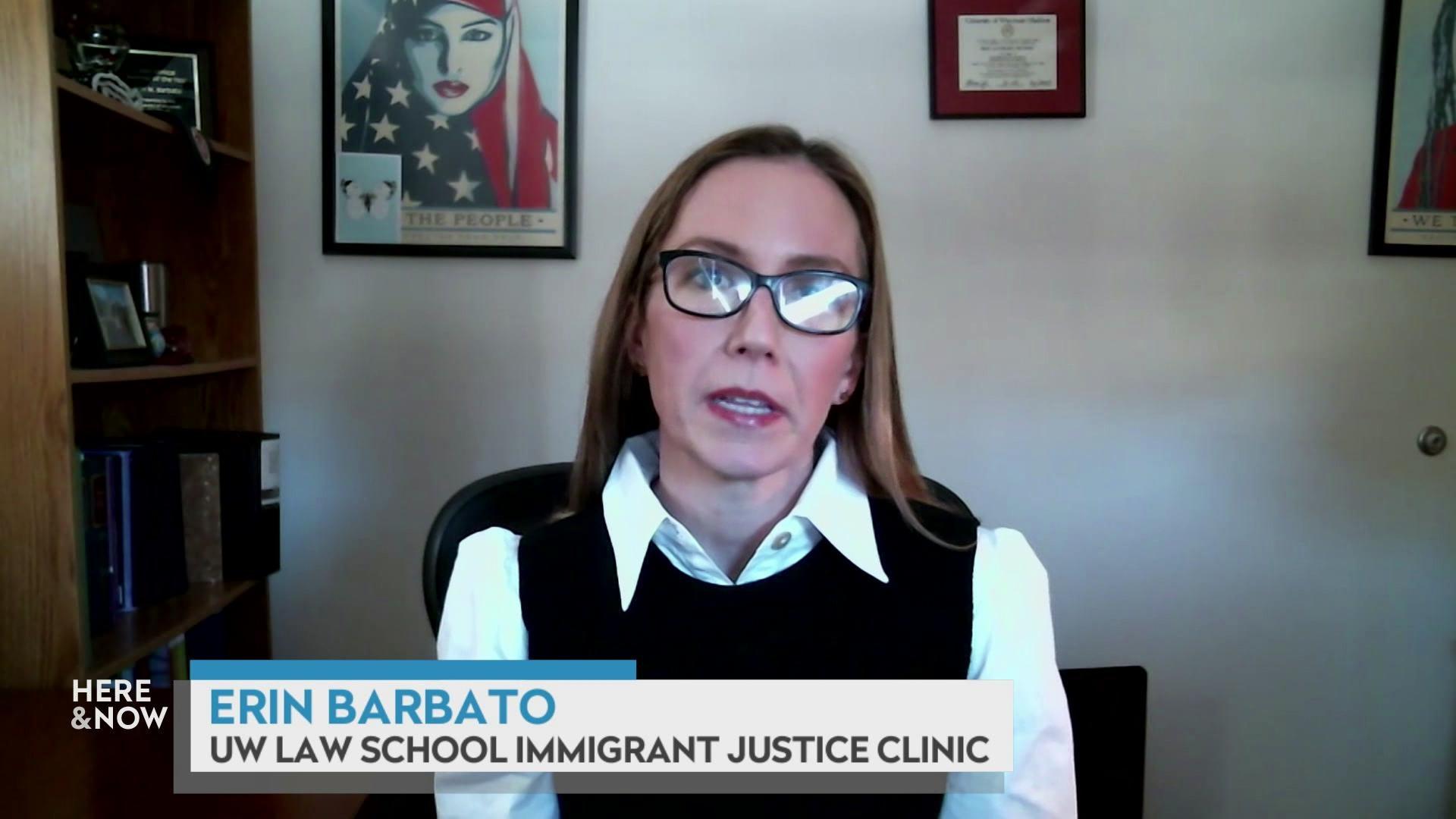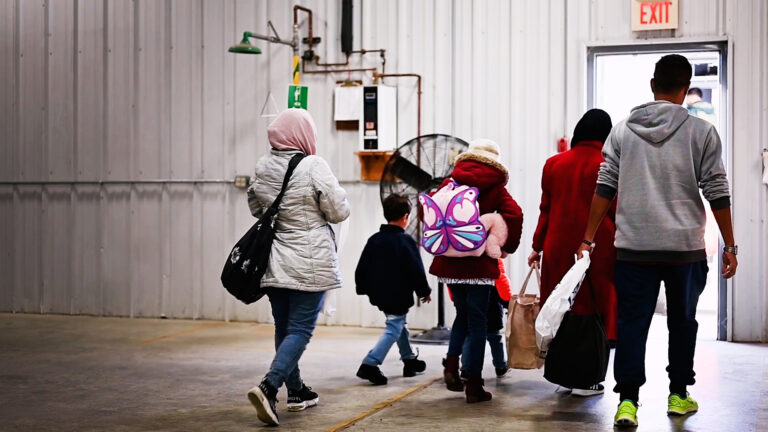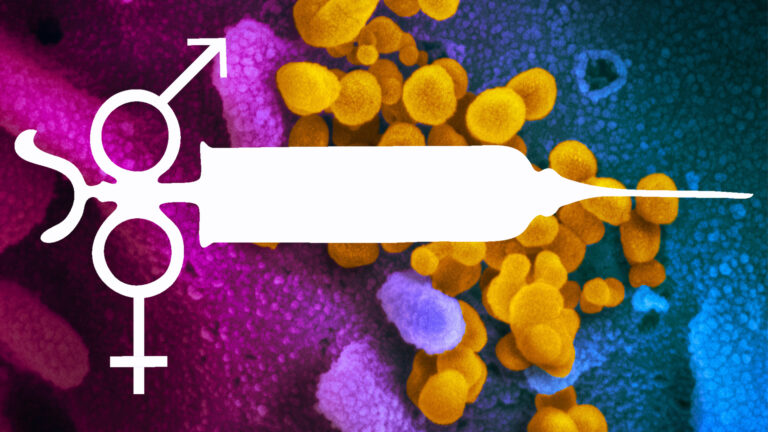What An Expanded Child Tax Credit Means For Two Madison Mothers
Here & Now Extra: One element of the American Rescue Plan will provide additional financial support to families in an effort to reduce poverty rates among children.
By Marisa Wojcik | Here & Now
March 17, 2021 • South Central Region

Tineshia Campbell has had to juggle new costs and expenses while raising her children through the pandemic. (Credit: Courtesy of Tineshia Campbell)
Tineshia Campbell has always looked for the silver lining, especially when times get tough. Since the onset of the pandemic, Campbell and many Wisconsinites who live paycheck to paycheck have struggled to make ends meet.
The mother of two lives in subsidized housing in Madison and works at a gas station.
“In the beginning it was really stressful because hours were cut and so my pay was cut, but the bills don’t get cut, you know what I’m saying? And the kids still have to eat,” Campbell said, recalling life in early 2020.
Despite the financial pressures these work struggles placed on her family, she considered herself “blessed” for still having a job when so many others lost theirs. But for Campbell, even a couple extra hundred dollars every month would have made a big difference.
“It would be amazing,” she said. “Bills would be on time, I wouldn’t have to figure out, am I going to pay for the kids to be able to go to school with the internet? Or should I worry about the food?”
The growing gap between those with wealth and others in poverty, only compounded by the COVID-19 pandemic, has many searching for new solutions. Those solutions may be found within the American Rescue Plan Act of 2021, the federal COVID-19 stimulus package signed into law March 11.
One element of the massive $1.9 trillion legislation is a child tax credit expansion, which will give families $3,000 per child with an additional $600 per child under the age of six. The fully refundable tax credit is available for households where one parent earns less than $75,000 or two parents less than $150,000 annually.
“This is going to be a really broad-based benefit that helps most children in Wisconsin, so everybody is going to see a lift from this. It will be especially important to families with low incomes who are struggling to make ends meet,” said Tamarine Cornelius, a research analyst at the Wisconsin analysis and advocacy nonprofit Kids Forward.
By widely targeting both middle- and low-income families, the additional money is intended to have the greatest impact on those trying to get by and who consistently waver in and out of poverty.
Here & Now extra
Focusing on children is intentional. A 2019 report from the National Academies of Sciences, Engineering and Medicine brought a committee of experts together with the goal of creating a roadmap to reduce child poverty by half. Among this committee’s many considerations, including expansion of existing social safety programs, the additional income for families with children was at the top of the list.
“A $3,000 per child per year child allowance policy would produce the largest poverty reduction, and would meet the goal of reducing deep poverty … by one-half,” the report reads.
Improving child outcomes was a priority for a reason, according to one of the report’s contributors Tim Smeeding, a professor of public affairs and economics at UW-Madison and the former director of its Institute for Research on Poverty.
“We know that child poverty reduces child opportunities. It affects kids from birth onward. Their brains develop differently,” said Smeeding in a March 11 interview on Noon Wednesday. “They’re less likely to go to school, less likely to complete school. Living in the stress created by poverty in the family has a big negative effect on kids.”
Women of color in Wisconsin have been particularly hurt in the pandemic, explained Smeeding, because they disproportionately work low-wage service jobs and due to the high cost of child care.
Tineshia Campbell knew how important it was for her kids to stay focused in school when COVID-19 moved learning online, switching her shifts at the gas station in order to stay home during the day and help them concentrate on this new virtual schooling.
Monicka Whitehead, a Madison mother of three, likewise felt financial strain on both ends. When she lost one of her jobs as a church youth director after people could no longer gather indoors, and combined with having her children at home every day when school buildings closed, she had to face income going down while expenses rose.
“The bulk have been food, electricity and internet,” Whitehead said of her additional expenses over the past year.
 Monicka Whitehead discusses her experiences through the pandemic. (Credit: PBS Wisconsin)
Monicka Whitehead discusses her experiences through the pandemic. (Credit: PBS Wisconsin)
With her kids no longer receiving meals from school, more money has been going toward food. Whitehead also had to subscribe to two different internet service providers in order to have enough bandwidth for all three kids to reliably attend school online.
“Some may think that’s a lot, but I do what I got to do so my kids can get their education. So instead, I cut something out of my life so I can make sure I can afford their internet,” Whitehead said.
More money for those who need it most
The new child tax credit is structured to produce a greater impact for families that need it most. The previous child tax credit was only partially refundable, which can set a cap on the amount a family can claim if it doesn’t meet a certain tax liability. The effect of this requirement has made it difficult for low-income earners to claim the full credit amount.
Under the new structure, the child tax credit is fully refundable and would allow lower earners to receive more money. And unlike the previous structure, the new child tax credit won’t count against families that receive food assistance or live in subsidized housing, according to Tim Smeeding.
“If you earn an extra dollar right now, and you’re living in public housing or you’re receiving SNAP benefits… there will be two income reductions in addition to taxes. The [new] child tax credit doesn’t work that way. There’s no clawback,” Smeeding said.
Tineshia Campbell had to strike that tough balance when the pandemic struck and her hours at the gas station were cut. An emergency expansion of food assistance, as well as a nearby food pantry helped Campbell and her children to get by.
“As we look back at what our history with these programs has been over the past several years, especially in Wisconsin, we’ve had a history of setting up administrative roadblocks to access many of these programs and other ways of discouraging participation,” Tamarine Cornelius said. “And now that we have this crushing need for these programs, those barriers are preventing people from accessing what they need. I think this is an opportunity for us to take a look at what is actually going to help families and really take a big step in improving the supports that help people.”
Monicka Whitehead shared similar criticisms of assistance programs after having experienced homelessness with her three kids.
“Some of the programs that they have, there’s a lot of hoops they want people to jump through,” she said of her experience. “Help me if you’re going to help me. Everything else is obsolete.”
Campbell also experienced homelessness for a long time and wants to provide a better future for her two kids.
“I do plan to save. I plan on starting generational wealth for my kids,” Campbell said. “I just think it’s amazing that you could give your kids that leg up in life, especially now. They can get the money when they’re 18, 21, 25. They can start it for college. They can use it for a business. They can use it for necessities and don’t have to ask people for help.”
These experiences are discussed in a report on the March 13 edition of Here & Now.
The pandemic response bill passed Congress along party lines, with Republicans criticizing the expanded child tax credit and related parts of the legislation as expansions of entitlement programs that will increase adults’ reliance on these benefits and disincentive people from working.
“By itself, it’s not enough to get you out of poverty,” Smeeding said, disagreeing with that criticism. “It does mean that you have stable, constant income every month. It means you can make plans. It means that you can have some money for childcare on your own. It means that you can pay your rent. It means that you won’t get evicted. It means that you can pay for some after school things for your kids.”
For Whitehead, the tax credit means giving her children a better education. Her eldest daughter is hoping to attend a private school in the fall where the application alone costs $500, let alone tuition.
“I’m not going to be the parent to tell my kid, oh yeah, I like that you have dreams and goals, but that doesn’t fit my budget. I’m never going to tell my kid that,” Whitehead said. “And even if I’m only able to afford one semester, at least I can say I did my best and tried my best so my child can experience what she wanted to experience in life.”
How the child tax credit money is distributed will also change. Beginning in July, families will be fronted these funds on a monthly basis, ensuring that families that are struggling right now won’t have to wait until tax season next year to begin seeing this aid.
For Wisconsinites like Campbell and Whitehead who hope to be able to use these funds to save and plan, this support will be temporary. The expanded child tax credit, along with many other changes that came out of the federal relief bill, will only be in effect for one year.
But advocates like Tamarine Cornelius are hoping that once the credit is put into place, it will provide a benefit that people won’t want to be taken away.
“We will have to ask ourselves when this is done if it had the tremendous impact that we’re anticipating on helping families function… we have to ask ourselves if we’re not going to do that, why we aren’t going to make those investments in our kids’ in the future.”
 Passport
Passport











Follow Us